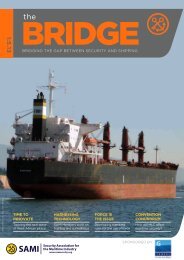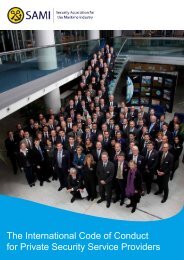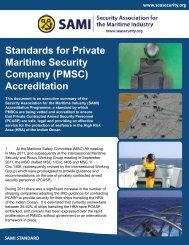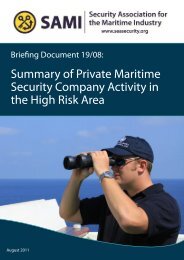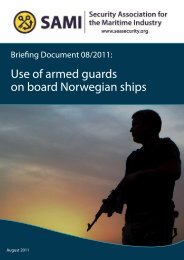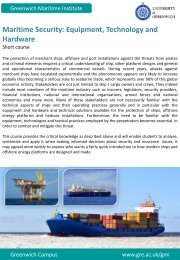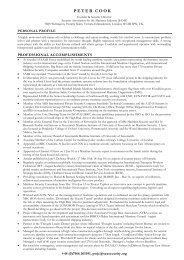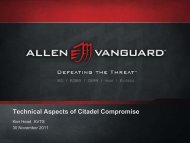SAMI Briefing Maritime Labour Convention FAQs and Text March 2013
SAMI Briefing Maritime Labour Convention FAQs and Text March 2013
SAMI Briefing Maritime Labour Convention FAQs and Text March 2013
Create successful ePaper yourself
Turn your PDF publications into a flip-book with our unique Google optimized e-Paper software.
• provisions affecting ship construction <strong>and</strong> equipment (Title 3) will not apply to shipsconstructed before the <strong>Convention</strong> comes into force for the country concerned [seeC3.1.a. Do the accommodation requirements of Title 3 apply to existing ships?].Smaller ships (less than 200 GT) may be exempted from specific accommodationrequirements [see C3.1.j. Is there any flexibility provided with respect to therequirements for accommodation <strong>and</strong> recreational facilities?];• provision is made (Article VII) for the situation of countries that may not havenational organizations of shipowners or seafarers to consult;• in connection with social security coverage under Regulation 4.5, provision is madefor national circumstances <strong>and</strong> for bilateral, multilateral <strong>and</strong> other arrangements [seeC4.5.b. What does the MLC, 2006 require for social security?].A17. Is the MLC, 2006 already applicable?The MLC, 2006 is not yet binding under international law for the countries that haveratified it. Under Article VIII, it will enter into force12 months after the date on whichthere have been registered ratifications by at least 30 Members of the ILO with a totalshare in the world gross tonnage of ships of at least 33 per cent. This is a higher than theusual ratification level (for ILO <strong>Convention</strong>s), <strong>and</strong> intended to assure greater actual impact.It reflects the fact that the enforcement <strong>and</strong> compliance system established under the<strong>Convention</strong> needs widespread international cooperation in order to be effective. Sincemany of the obligations under the <strong>Convention</strong> are directed to shipowners <strong>and</strong> flag States itis important that ILO Members with a strong maritime interest ratify the <strong>Convention</strong>.As of January 2012 the MLC, 2006 has been ratified by [22] countries representingmore than [56] per cent of the world gross tonnage of ships although seven moreratifications are needed to trigger entry into force 12 months later, numerous private sectoractors <strong>and</strong> countries have moved forward ahead of the international legal situation <strong>and</strong>have begun to inspect <strong>and</strong>, if required, certify ships.A18. Why is the MLC, 2006 likely to achieve the aim of near universalratification?There are a number of indicators suggesting that near universal ratification will beachieved: one is the unprecedented vote in favour of the <strong>Convention</strong>. It was adopted by theInternational <strong>Labour</strong> Conference by a record vote of 314 in favour <strong>and</strong> none against (twocountries (four votes) abstained for reasons unrelated to the substance of the <strong>Convention</strong>),after detailed review by over 1,000 participants drawn from 106 countries. This almostunprecedented level of support reflects the lengthy international tripartite consultation thattook place between 2001 <strong>and</strong> 2006 <strong>and</strong> the unswerving support that had been shown by thegovernments <strong>and</strong> workers <strong>and</strong> employers who worked together since 2001 to develop the<strong>Convention</strong> text. It has been designed to achieve near universal ratification because of itsblend of firmness on rights <strong>and</strong> flexibility with respect to approaches to implementation ofthe more technical requirements <strong>and</strong> because of the advantages it gives to the ships ofcountries that ratify it. Finally, the ships of ratifying countries that provide decent workingconditions for their seafarers will have an advantage as they will be protected againstunfair competition from subst<strong>and</strong>ard ships [see A4. What is meant by the “no morefavorable treatment” clause?]. By benefitting from a system of certification they will,henceforth, avoid or reduce the likelihood of lengthy delays related to inspections inforeign ports.10 FAQ





